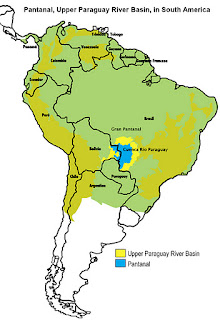 |
UN Conference
on
Trade & Development |
The 2011 edition of the information economy report published by UNCTAD presents three interesting cases of initiative undergoing in Zambia, Ethiopia
and Kenya where the support of ICT applications is helping small-scale farmers to move from subsistence to commercial agriculture. The access to information regarding the right crop to choose, the volumes of cultivation, the storage and processing issues are helping local farmers to better spend their money and better earn from their work
Zambia - The market information service of
Zambia National Farmers Union
The ZNFU4455 was launched in 2006 by the government of Zambia. The service covers 180 traders and their offers for 15 commodities. To ind the best available price, producers and traders send an SMS to 4455 containing the irst four letters of the commodity and the relevant district or province.
They immediately receive a text message with the best prices and with codes designating the potential buyers. After selecting a bid, the farmer sends a second SMS with the buyer’s code. The farmer then receives a text message containing the buyer’s name and phone number. Finally, the farmer phones the buyer directly and starts trading. Each message costs about $0.15. The service is easy to understand and use, and it provides information upon request rather than pushing content onto farmers.
Ethiopia - The
Ethiopia Commodity Exchange (ECX) was launched in 2008. Through the use of ICTs, it is contributing to making agricultural practices in the country more productive. The ECX is seeking to create
an integrated agricultural information system, using ICTs to disseminate data and information to farmers
across the country and to establish a database with up-to-date world market prices on commodities. This
ICT-based marketplace serves the entire value chain: farmers, traders, processors, exporters and consumers.
Agricultural markets in Ethiopia have been characterized by high transaction costs and risks. With only a
third of output reaching the market, commodity buyers and sellers have traditionally only traded with people they know. Trade took place on the basis of visual inspection, as there was no way of assuring product quality or quantity. This drove up market costs as well as consumer prices. Small-scale farmers, who account for 95 per cent of Ethiopia’s agricultural output, came to the market with little information, and were at the mercy of merchants in the markets they knew, poorly equipped to negotiate prices or reduce their risk. The new exchange, which is a partnership of market actors, the Members of the Exchange and the Government of Ethiopia, automated the system from beginning to end, from warehousing to clearing and settlement of payments to the delivery of commodities. By bringing integrity, security and eficiency to the
market, the exchange has become visible throughout the supply chain, resulting in real-time price transmission, improvements in the quality of exports, and better returns for farmers. During its first 1,000 days,
ECX traded over a billion dollars worth of commodities, including four million bags of goods handled and
delivered. It processed 69,000 transactions involving 450 ECX members.
Kenya - The
DrumNet and
Kenya Agricultural Commodity Exchange(KACE) projects are two market information services in Kenya that operate in overlapping areas but differ in terms of geographic coverage. The DrumNet project was launched in 2003, with the primary objective of shortening the value chain of targeted commodities and improving farmers’ revenues. It aimed to replace numerous intermediaries by using a mobile phone-based platform to provide market information to the project’s partners.
The KACE project was first launched in 1996 as a commodity exchange with an auction floor located in Nairobi. Its goal was to provide a forum to bring sellers (farmers) and buyers together, and thereby to eliminate the many intermediaries and reduce the transaction costs. The commodities traded included staple and non-staple food crops, livestock, livestock products and cash crops. In 1998, KACE launched a website through which subscribing buyers and sellers could place bids for commodities.
The company also initiated a mobile phone-based information-provision programme with nationwide coverage. By means of this service, sellers (farmers) and buyers have been able to obtain commodity prices in different markets by sending an SMS to KACE at a cost of K Sh 5 (about $0.05). Furthermore, KACE runs a nationwide radio programme which allows buyers and sellers to offer bids for commodities during the broadcast.
To read more about the 2011 Information Economy Report you can download the electronic version by clicking on the frontpage below.


















